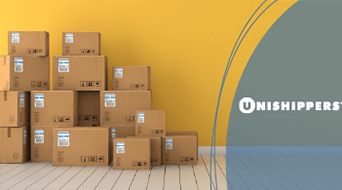Understanding Package Shipping Rates (And How To Save Big!)
Why does small-package shipping often end up costing more than the initial rate quotes suggest? That's a good question! If you're a small to medium-sized business (SMB), you know how unpredictable and complex parcel shipping rates can be.
One moment you've got a reasonable quote, and the next, unexpected fees and charges are piling up. It's enough to make anyone feel frustrated.
But what if you could get a clearer picture of what's driving these costs? And better yet, what if there were ways to save on small package shipping and make your business more efficient?
That's where we come in. Unishippers is here with tips and tools to help you better understand your parcel rates. Let's dive in!
What's included in parcel shipping rates?
At first glance, shipping a package seems simple enough: just get it from point A to point B. But the reality is that parcel shipping involves a lot more behind the scenes. The shipping cost you see is actually a reflection of many factors that go beyond the weight and size of the package.
Here's a breakdown of some of what's included in parcel shipping rates:
- Driver time and labor: The time it takes to deliver your package counts toward the overall shipping cost.
- Equipment costs: The cost of using trucks, planes and other vehicles to move your packages.
- Technology costs: Tracking systems, label creation and other tools help keep everything organized and running smoothly.
- Profit margin: Shipping carriers are businesses, too, and factor in enough cost to make a profit.
Other Key Factors that Impact Parcel Shipping Rates
When calculating parcel shipping costs, many other factors come into play that affect the final price. Let's take a closer look at some of the key contributors.
1. Size and weight
The dimensions and weight of your package play a big role in determining your shipping cost. Light but large boxes are particularly tricky because they take up valuable space in delivery trucks without being heavy enough to justify that space. This is where dimensional weight pricing comes into play. Also, if your package is large or oddly shaped, you may face additional fees like oversize charges.
2. Distance to destination
Shipping zones help calculate the distance between the origin and destination of your package. Simply put, the farther your package travels, the higher the cost. However, it's not just about the miles — zones make this process more efficient by grouping locations into categories. The shipping cost is based on the zone your package is sent to, not the exact miles traveled. This system allows carriers to simplify and standardize pricing for different distances, making it easier to determine shipping costs.
3. Destination type
Shipping to a home address usually costs more because it's less efficient than shipping to a business where there may be multiple companies and packages. Also, delivering to remote areas can lead to higher costs, as it requires more resources and longer routes to complete the delivery.
4. Fuel costs
Fuel is a major factor in shipping costs, and it fluctuates often. That's why many carriers apply a fuel surcharge to your shipping fees. Stay on the lookout for these charges, as they can change from week to week.
5. Insurance
Carriers often include liability protection but if you're shipping something valuable, you'll want to purchase additional coverage. Specialized parcel insurance like ProfitProtect™, administered by UPS Capital®, can help protect your business from the cost of lost or damaged goods.
The Cost of Parcel Shipping: It's About More Than Just Rates
When you're thinking about parcel shipping, it's important to look at the bigger picture. It's not just about the price of getting your goods from one location to another. You also need to consider:
- Carrier contracts and relationships: Setting up contracts with carriers can lead to better rates and service.
- Claims handling: If something goes wrong, think about how you will handle claims and issues with shipping.
- Shipping strategies: Make sure you're using the most efficient shipping methods and optimize your processes to maximize cost savings.
By working with a third-party logistics provider (3PL) like Unishippers, you can simplify these processes. A 3PL can handle negotiations, help you avoid unnecessary fees, and identify ways to make your shipping more efficient.
Why choose Unishippers to optimize your parcel shipping costs?
Working with Unishippers can give you access to:
- Better shipping rates: As part of the nation's largest non-retail authorized reseller of UPS® shipping services, Unishippers can negotiate top parcel rates for shippers like you.
- Expert advice: Our team knows how to navigate the complexities of parcel shipping, so we can help you avoid costly mistakes.
- Technology tools: With our myUnishippers™ transportation management system, you can track your shipments, monitor spending and identify areas where you can save money.
By partnering with Unishippers, you don't just get help with shipping — you gain a valuable ally in streamlining your entire logistics process.
Ready to take control of your shipping costs? Get a free shipping consultation today and discover how Unishippers can help optimize your parcel shipping strategy.



